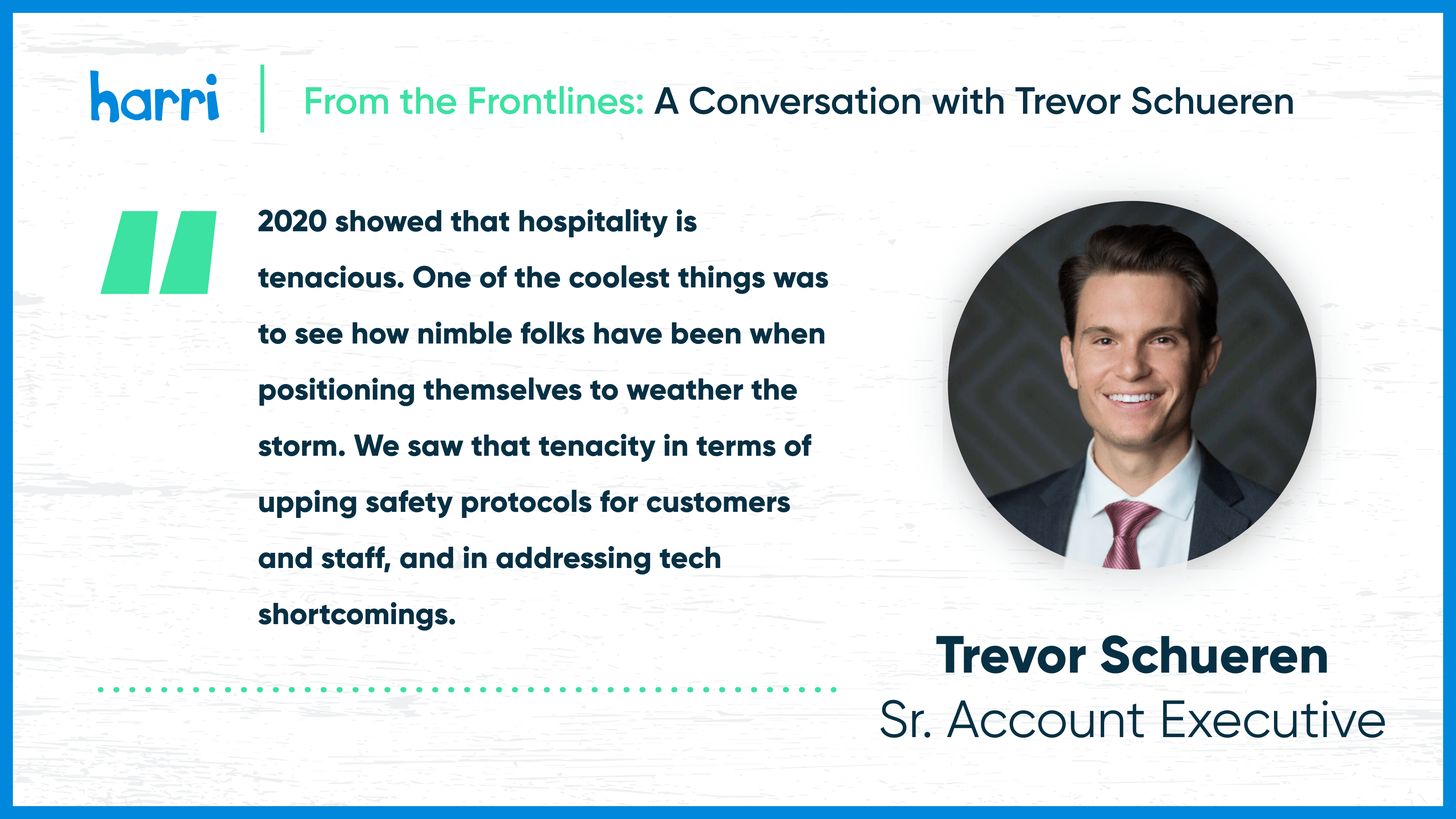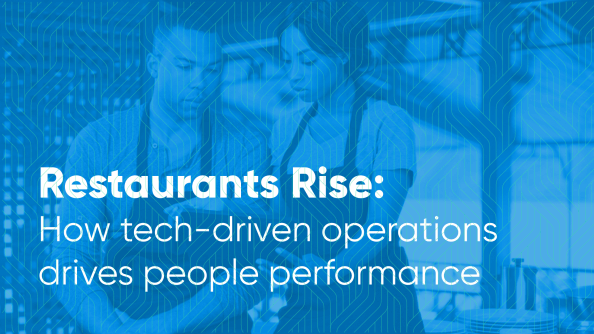From the Frontlines: A Conversation with Trevor Schueren on the Future of Hospitality

- By Harri Insider Team | January 6, 2021
Welcome back to From the Frontlines! In this series, Harri highlights members of our team who are up to big things and have big insights into the hospitality industry. This week we chat with Trevor Schueren, Senior Account Executive here at Harri. In this episode, we discuss the future of hospitality, how the industry has evolved in 2020, weaknesses and strengths uncovered by COVID-19, and operational trends we’ll see moving into 2021.
We’re all excited to put 2020 behind us. As someone so ingrained in the hospitality industry, can you tell us what weaknesses were exposed in 2020?
It’s definitely a moral victory to see the calendar say 2021! Across the board, 2020 showed us major challenges related to tech shortcomings and restaffing operations. The combination of these weaknesses amplified financial burdens, making day-to-day operations impossible for some businesses.
Part of the restaffing problem stems from the issue that a large portion of front-line employees don’t have healthcare. That means the people most exposed to COVID-19 were the least protected, which understandably led to a lot of employees not wanting to return to work. For an industry heavily reliant on its front-line staff, this is an issue that can’t be overlooked.
Can you dive deeper into the tech shortcoming facing restaurants?
Absolutely. Handling customer orders has changed drastically to accommodate new COVID safety guidelines, with delivery and online ordering seeing rapid revamps. Third-party companies were used to supplement these shortcomings, but in-person, experiential dining suffered the most.
2020 also exposed weaknesses in communications. Restaurant operators and managers had to navigate communicating employee furloughs, employment status, virus safety, and store reopening updates in a clear and consistent manner. But when push came to shove, a lot of these businesses didn’t have a tech infrastructure in place to connect with employees to help them feel safe enough to return to the workplace.
That makes a lot of sense. Let’s focus on the strengths that the industry saw.
Out of all industries, hospitality was the scrappiest across the board. 2020 showed that hospitality is tenacious. One of the coolest things was to see how nimble folks have been when positioning themselves to weather the storm. We saw that tenacity in terms of upping safety protocols for customers and staff, and addressing those tech shortcomings I mentioned earlier.
Takeout and delivery, for example, saw so many meaningful changes that create a better customer experience even outside of the context of the pandemic. There are many more convenient contactless options and even food packaging has seen much-appreciated quality upgrades. To circle back to those third-party delivery companies, we’re seeing more of a partnership dynamic between restaurants and these service providers, which is a big win/win scenario.
You made some excellent points! What trends in the hospitality industry do you think we’ll see going forward into 2021?
The conversation for growth and restaffing has taken a positive turn. We’re hearing more and more restaurants looking into the real estate market to purchase their building, rather than rent it out, or even to fuel expansion efforts. NYC was decimated from the hospitality standpoint, but it created this great opportunity for businesses still standing to bring on new locations.
In that regard, we’ll see more mergers and acquisitions. While there are plenty of well-established and profitable businesses out there, the owners are burnt out from the craziness of 2020. We’ll see younger entrepreneurs acquire those successful businesses and add in tech infrastructure to create more efficient processes and further improve profitability for those brands.




















